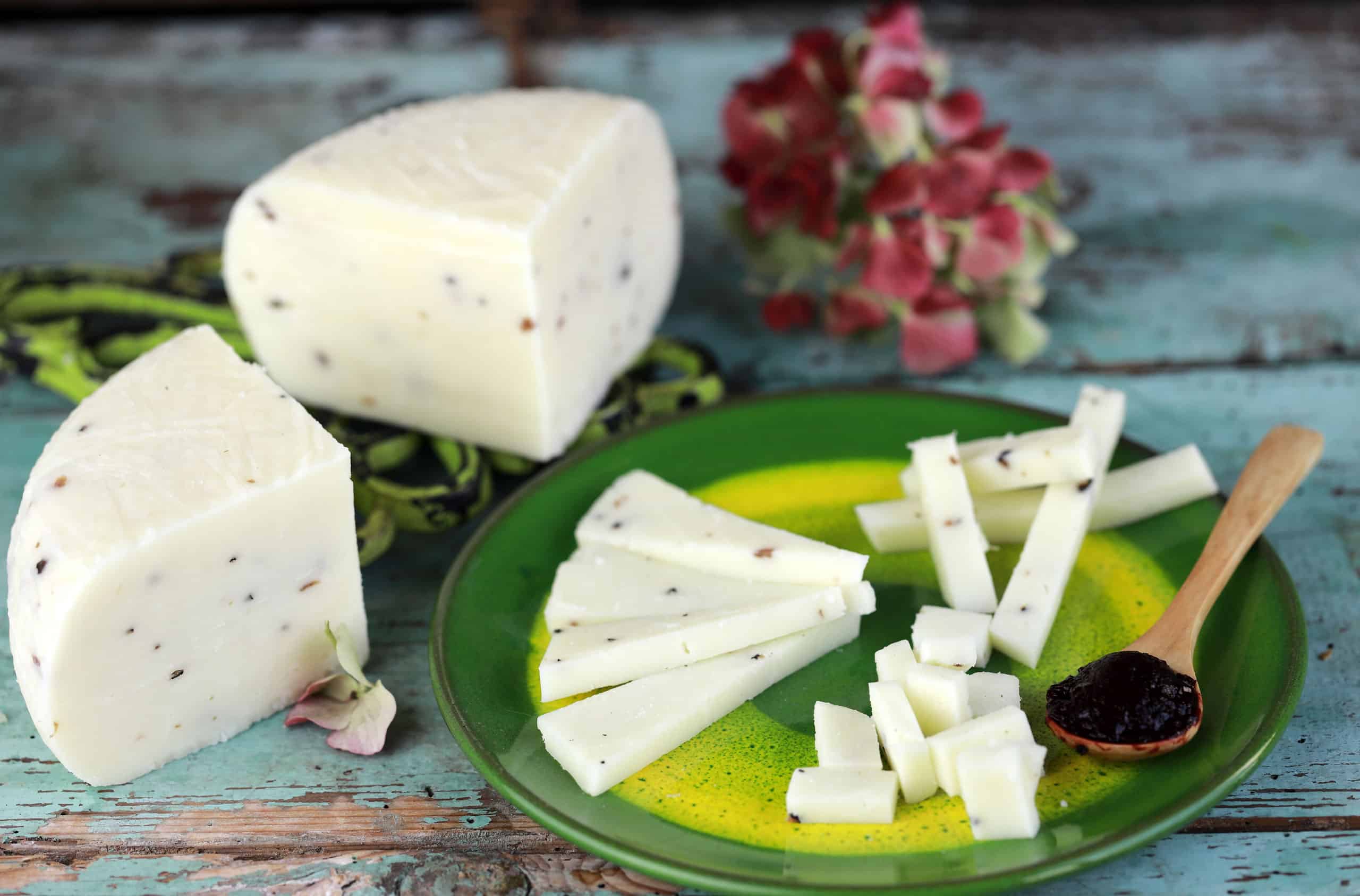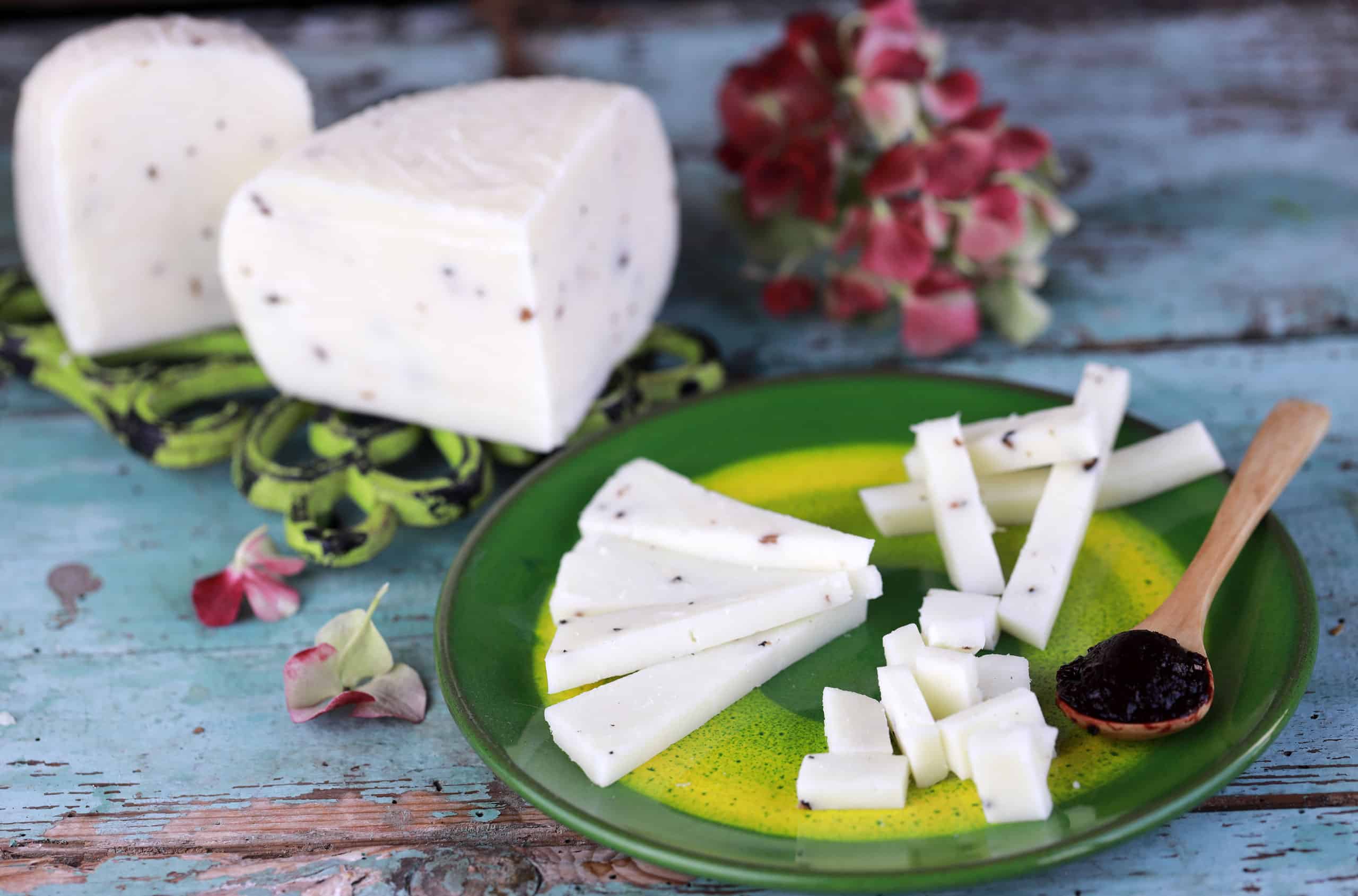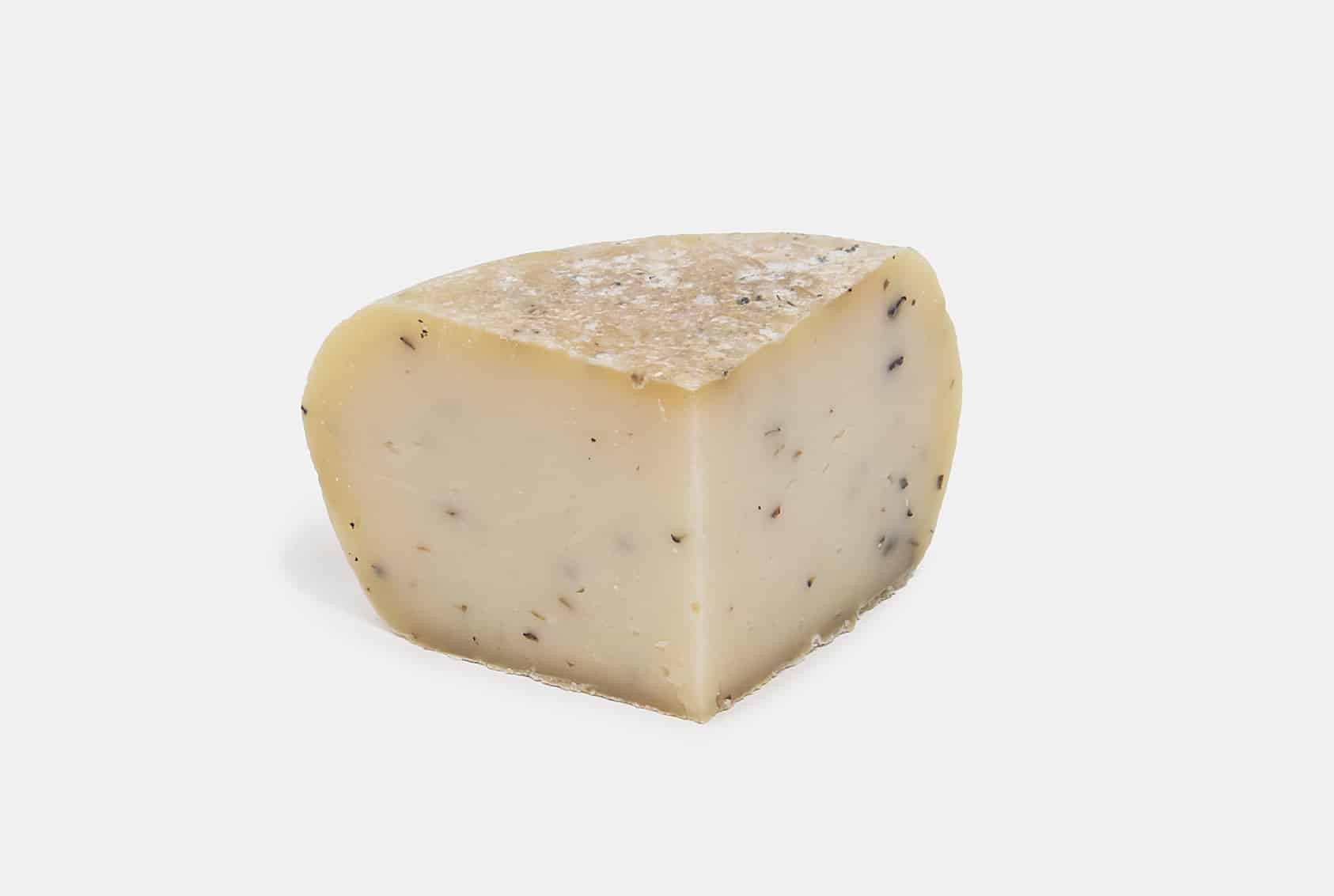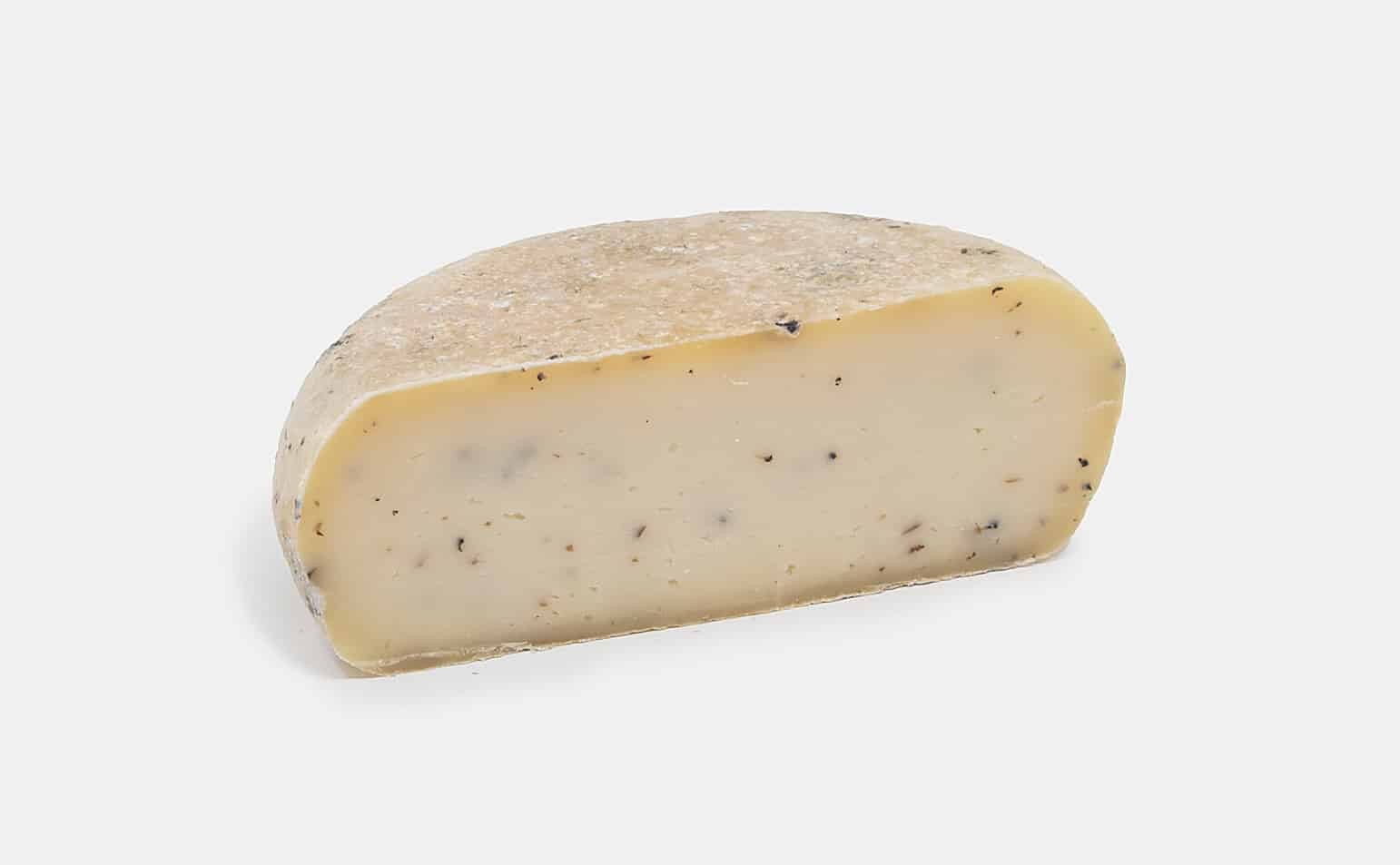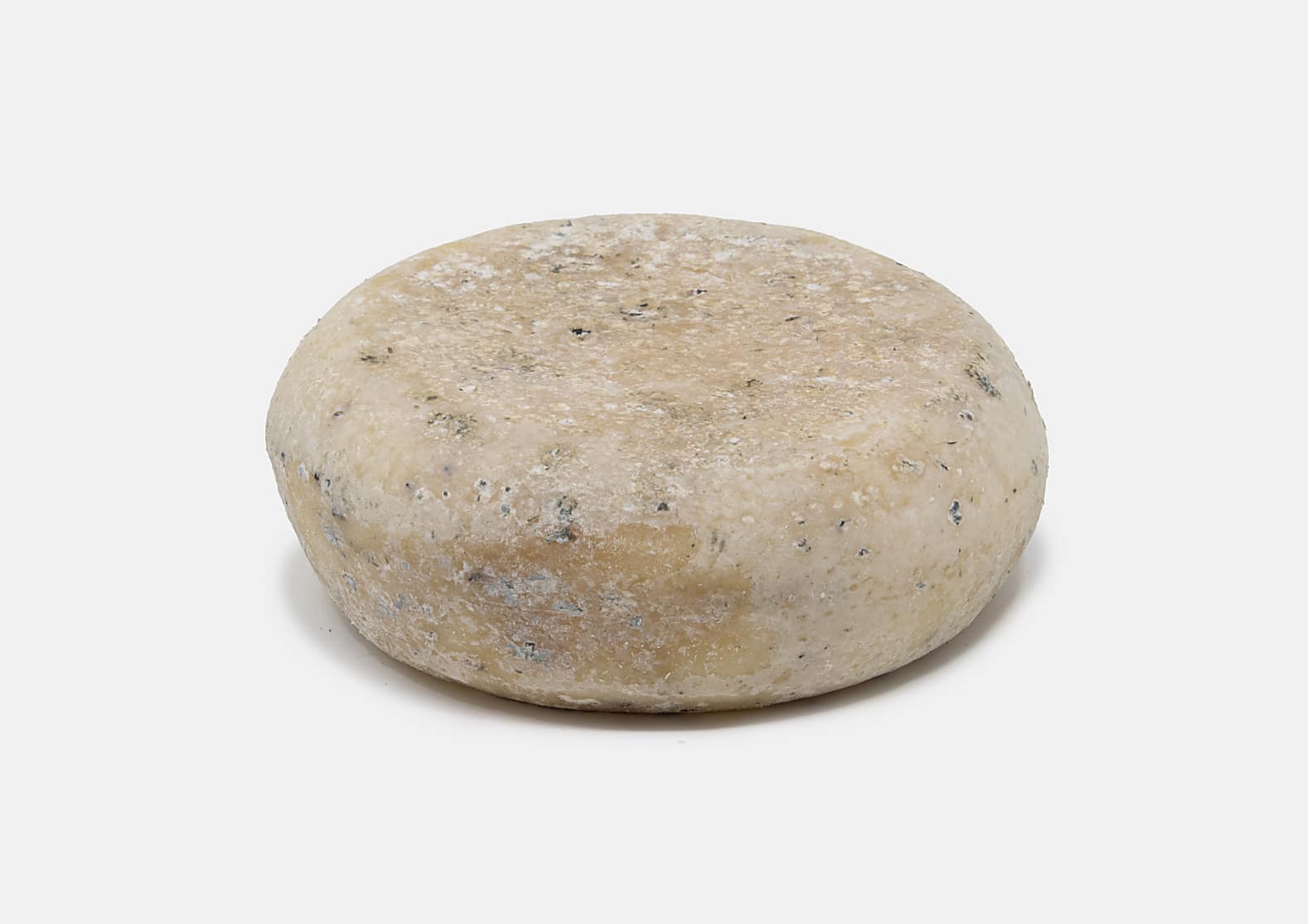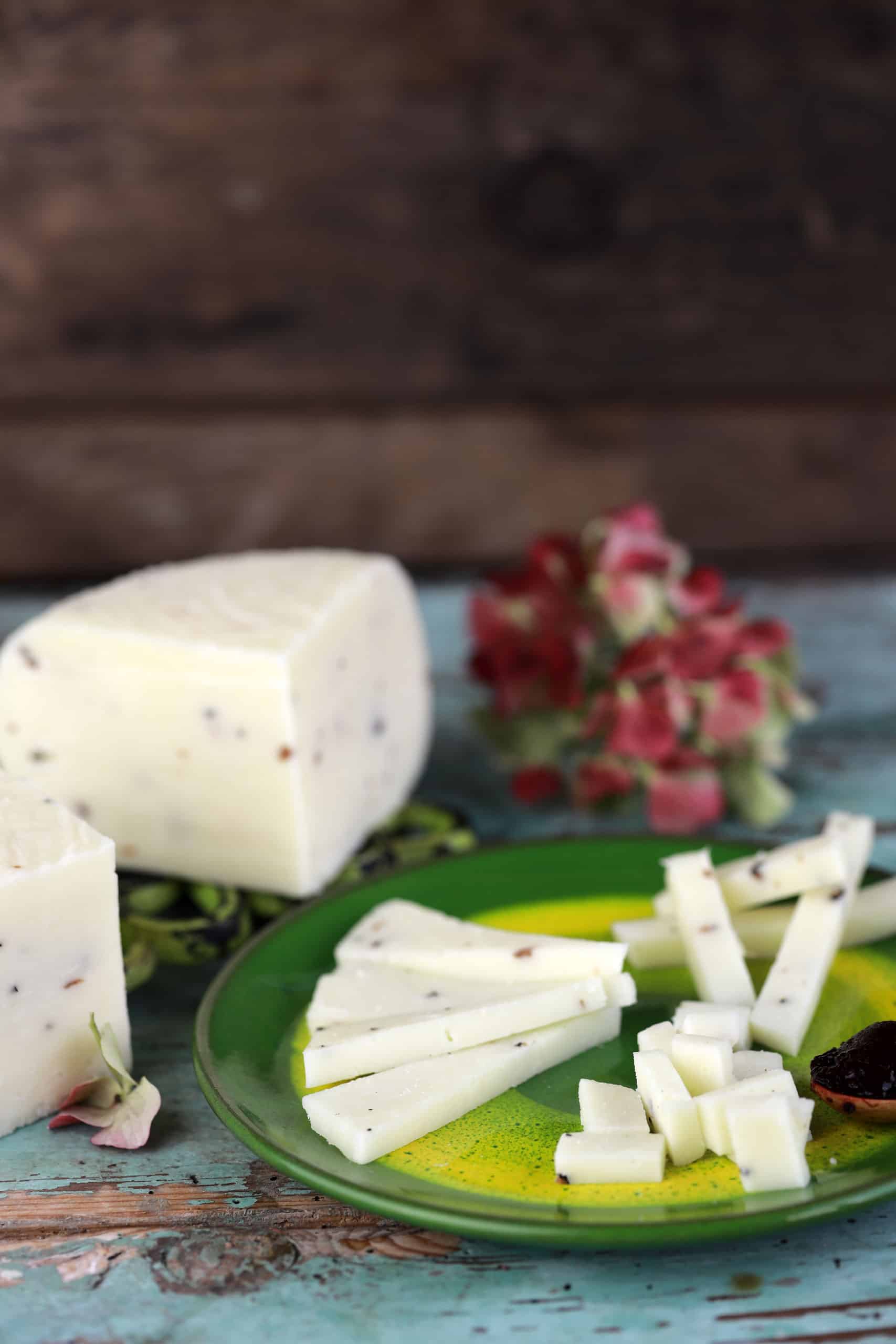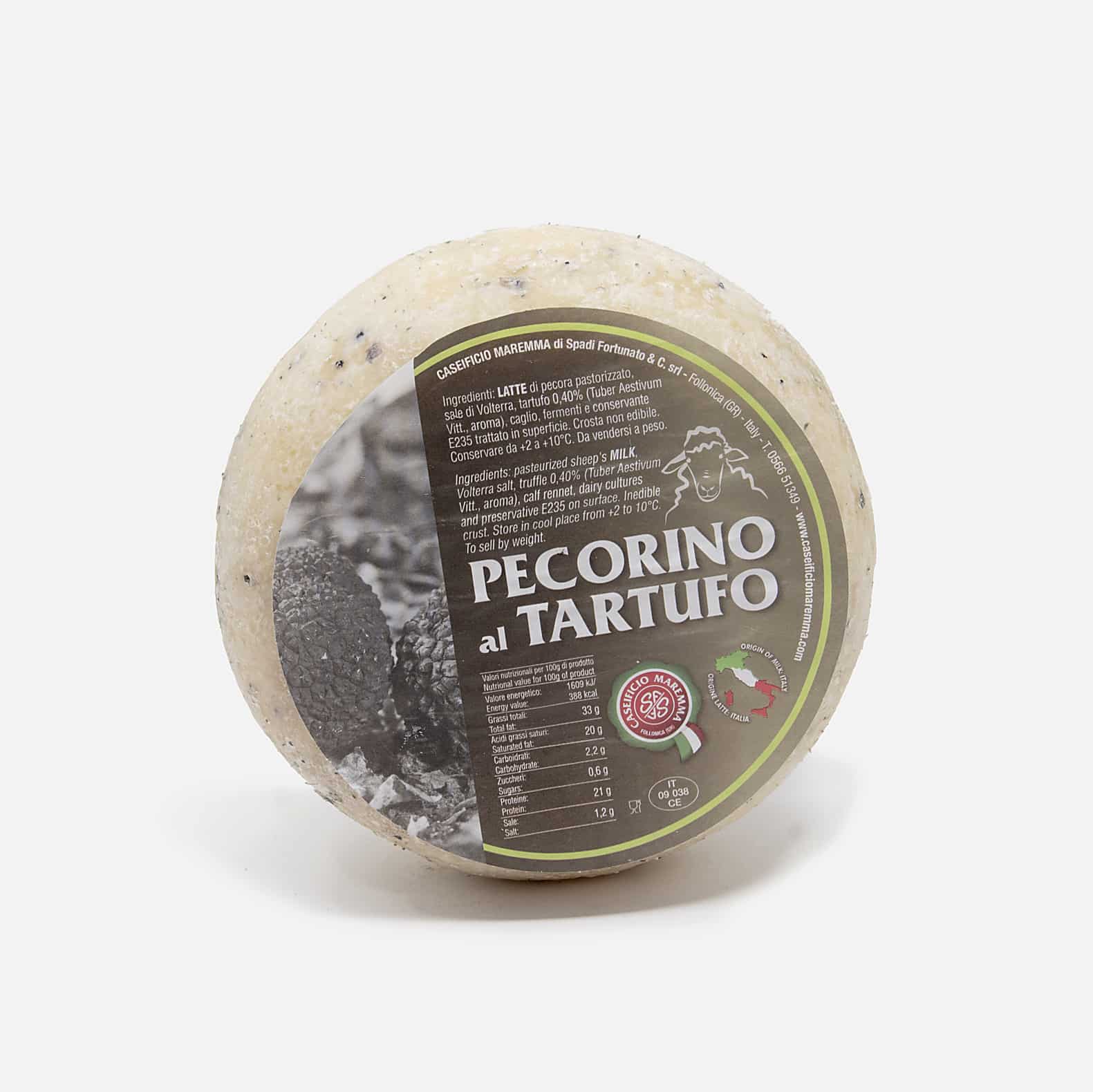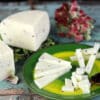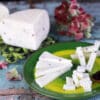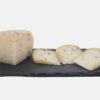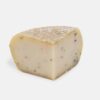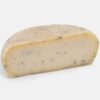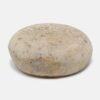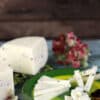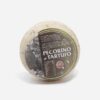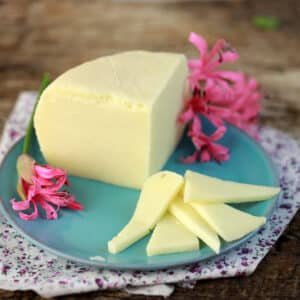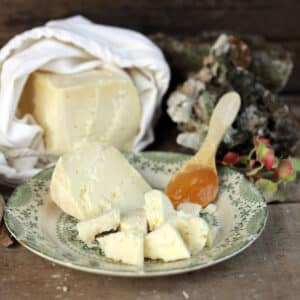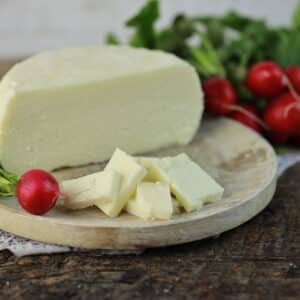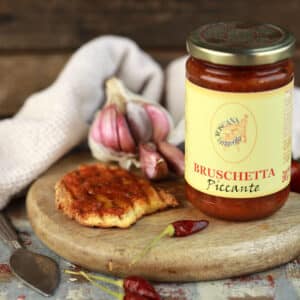Certainly one of the most “precious” cheeses in our offer, Truffle Pecorino is an excellence of dairy production in general. It is built for our Salumificio di Gombitelli by the Maremma di Follonica dairy, a family-run business – Mr. Spada and his sons have been running it since the 1960s – which has transformed its products into real ambassadors of taste and Tuscan craftsmanship.
Our Truffle Pecorino is produced using only fresh pasteurized sheep’s milk, Volterra salt, rennet, lactic ferments and of course, “real” black truffle.
The crust, white or very pale straw yellow in color, is soft and studded with truffle nuggets, small pieces that are also found inside the light and compact paste.
Its structure is very balanced and is the result of careful maturation ranging from 30 to 60 days.
We can define this pecorino as a “meditation” cheese due to the exceptional flavor that distinguishes it: the intense and aromatic notes of the truffle, in fact, blend perfectly with the sweetness of sheep’s milk, in an unrepeatable marriage of flavors that explodes in mouth from the first taste.
It lends itself to being consumed at any time of the day, from aperitifs to the end of a meal, even passing through a refined tasting. Present it cut into strips or slices not too thin, and accompany it with a good glass of red wine: you will make all your guests happy. Even the most demanding and with a “gourmet” palate.
The truffle, between history, tradition and legend
If we were to identify a word that embodies all the charm of this mushroom or tuber – yes, because his majesty the truffle is nothing more than a genus of mold of the order Pezizales, a family of the Tuberaceae – is a mystery.
The truffle is the son of the darkness that hides under the earth, sheltered by the roots of the trees. It cannot be cultivated, it can only be sought, and if lucky, found. Even the origin of its name is shrouded in the most mysterious darkness: its etymology has been debated for centuries by linguists who eventually came to the conclusion that the word “truffle” derived from the term territùfru, from the late Latin terrae tufer (excrescence of terra), where tufer would be used instead of tuber. Recently, however, Giordano Berti, historian and founder of the Historical Archive of the Truffle, has demonstrated very convincingly that the term truffle is of medieval origin and derives from terra tufule tubera, a wording that appears in the Tacuinum sanitatis, an illuminated naturalistic code dating back to the 14th century. century.
Whatever the origin of its name, however, the truffle has been known since the time of the Babylonians, who searched for it under the dunes of the eastern deserts. Its fame reached as far as the Greeks and Romans, who admired it to such an extent that they attributed divine qualities and exceptional properties, especially aphrodisiacs, by virtue of which it was dedicated to none other than Venus, the goddess of love.
During the Middle Ages, however, it experienced a long period of oblivion: it was completely ousted from the tables of the nobles and powerful, because it was believed that it contained deadly scents, but above all that it was the food of witches. It therefore survived only in popular and traditional cuisine.
We will have to wait for the Renaissance to find it again in vogue, where it will triumph at the banquets organized by Lucrezia Borgia and Caterina de ‘Medici.
Among the most recent historical figures linked to the truffle there is also Camillo Benso Conte di Cavour who used to use it as a powerful diplomatic lever. Among the writers he was praised by Alexandre Dumas, who defines it as the sancta sanctorum of the table. Lord Byron always kept one on his desk because he was convinced that the odorous scents of the truffle stimulated his poetic creativity.
Ingredients
Pasteurized sheep’s MILK, Volterra salt, 0.40% truffle (Tuber Aestivum Vitt., Aroma), rennet, enzymes and preservative, surface treated E235.
Inedible rind.
Store from + 2 ° to + 10 ° C.
Produced and packaged in the IT 09 038 CE factory.

